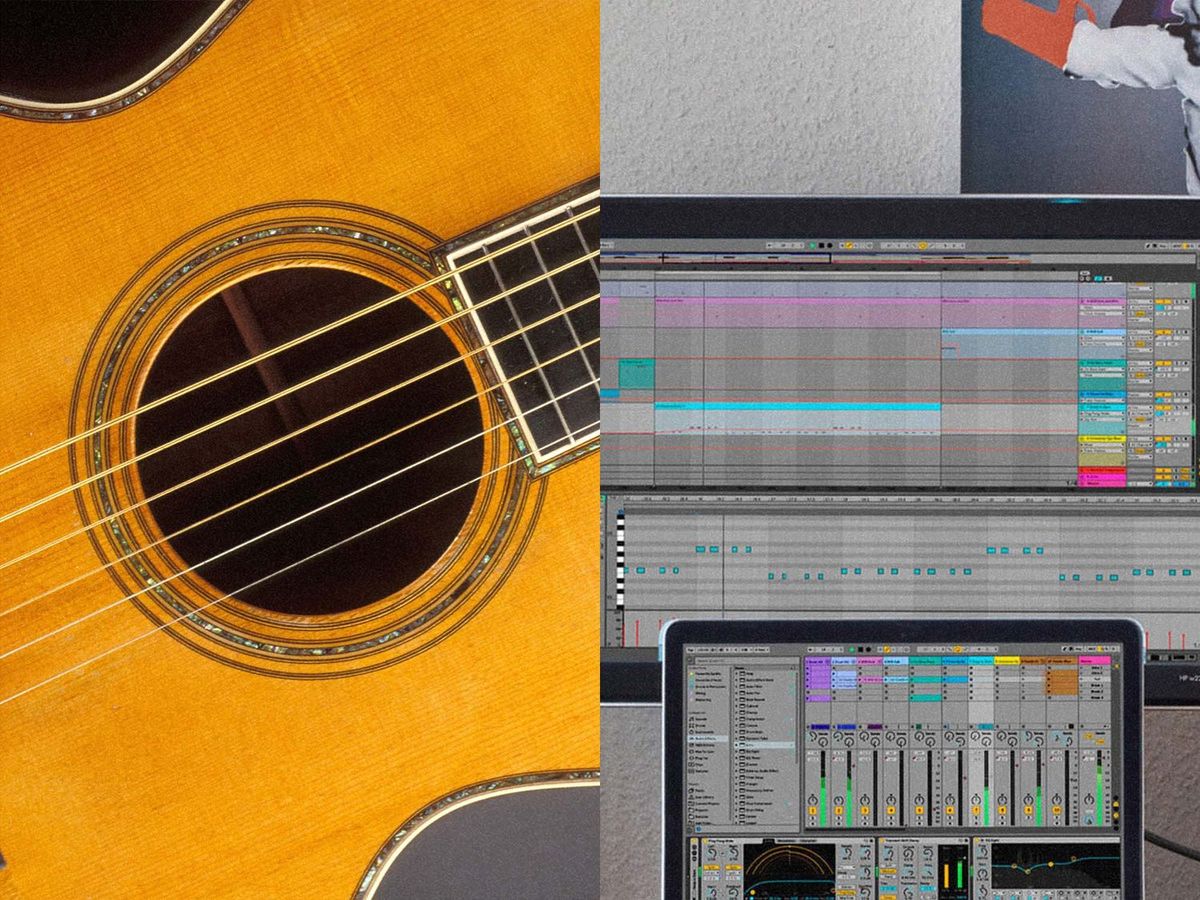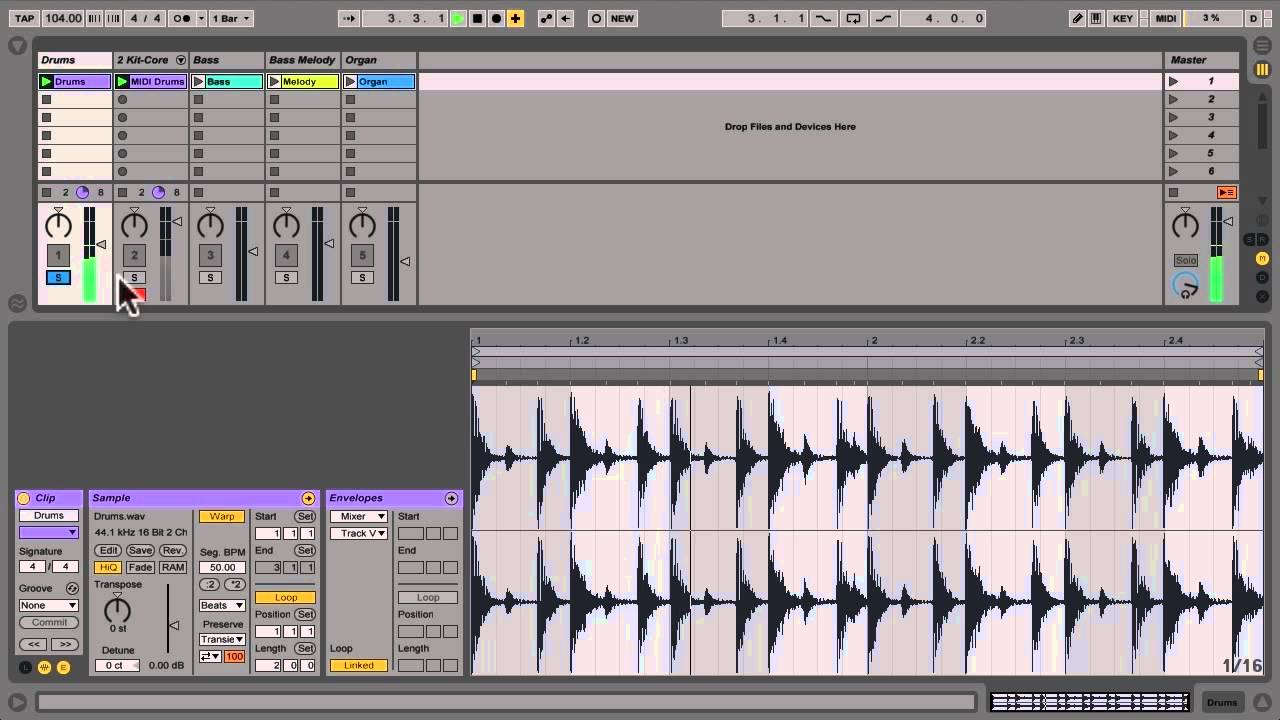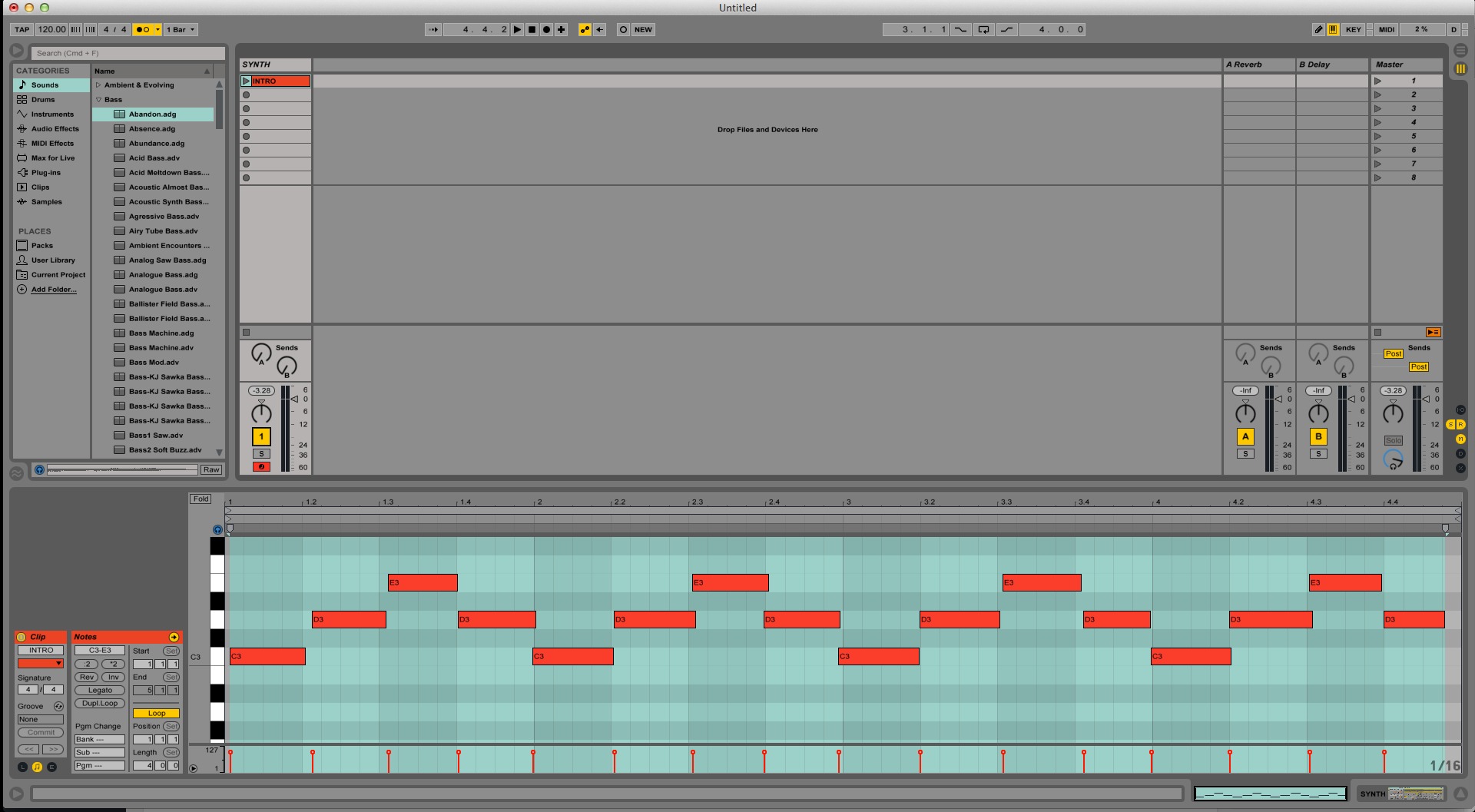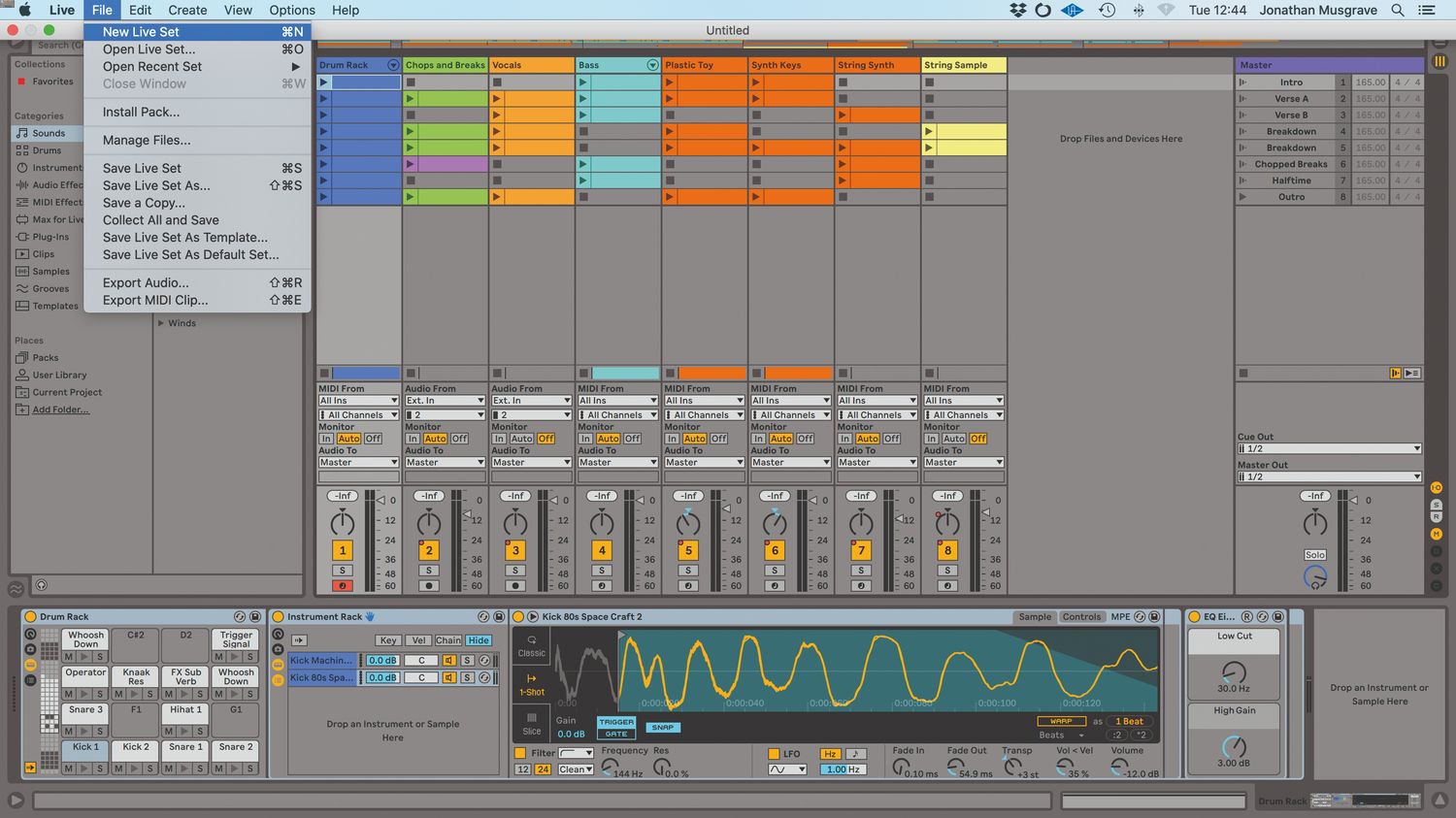Home>Production & Technology>MIDI>How To Record MIDI Piano In Ableton
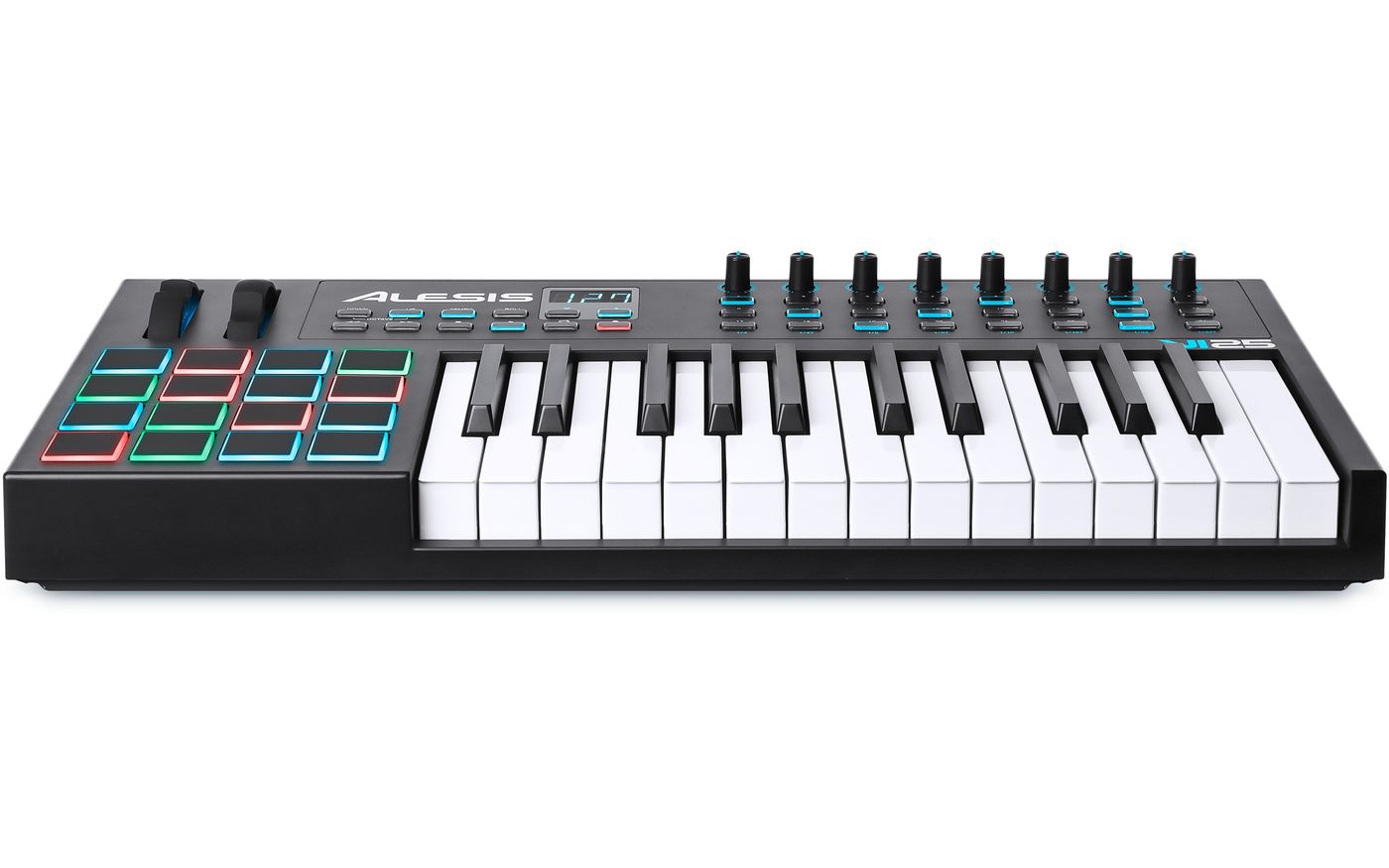

MIDI
How To Record MIDI Piano In Ableton
Modified: February 22, 2024
Learn how to record MIDI piano in Ableton with our step-by-step guide. Explore MIDI recording techniques and improve your music production skills today.
(Many of the links in this article redirect to a specific reviewed product. Your purchase of these products through affiliate links helps to generate commission for AudioLover.com, at no extra cost. Learn more)
Table of Contents
Introduction
Recording MIDI piano in Ableton is a captivating journey that allows musicians and producers to unleash their creativity, capturing the nuances of their musical expressions with precision and finesse. Whether you're a seasoned pianist, a budding composer, or an electronic music enthusiast, the ability to record MIDI piano in Ableton opens up a world of possibilities for crafting captivating melodies, harmonies, and rhythms.
Ableton, renowned for its intuitive interface and powerful features, provides a dynamic platform for capturing the essence of a piano performance in MIDI format. Unlike traditional audio recording, MIDI recording offers unparalleled flexibility, enabling users to manipulate every aspect of the performance with unparalleled freedom. From adjusting the timing and velocity of individual notes to experimenting with different virtual instruments and soundscapes, MIDI recording empowers creators to sculpt their musical visions with meticulous detail.
In this guide, we will delve into the intricacies of setting up and recording MIDI piano in Ableton, exploring the essential steps to unleash the full potential of this versatile digital audio workstation (DAW). Whether you're aiming to lay down a captivating piano melody, craft intricate chord progressions, or experiment with avant-garde sound design, mastering the art of MIDI piano recording in Ableton will undoubtedly elevate your musical endeavors to new heights.
Join us as we embark on a journey through the realms of MIDI piano recording, unraveling the techniques, tips, and tricks that will empower you to harness the full expressive potential of your musical ideas within the boundless realm of Ableton. Let's dive into the enchanting world of MIDI piano recording and discover the myriad possibilities that await at the intersection of creativity and technology.
Setting Up MIDI Piano in Ableton
Setting up MIDI piano in Ableton is the crucial first step in the exhilarating journey of capturing the soulful essence of piano performances in a digital format. Ableton, renowned for its seamless integration of MIDI instruments, provides a user-friendly interface for configuring MIDI devices and unleashing the full potential of virtual piano sounds. Whether you're using a MIDI keyboard controller or a digital piano with MIDI connectivity, the process of setting up MIDI piano in Ableton involves a few essential steps to ensure a smooth and immersive recording experience.
-
Connecting the MIDI Device: The initial step in setting up MIDI piano in Ableton involves connecting your MIDI device to your computer. Whether it's a USB MIDI keyboard, a digital piano with MIDI output, or a MIDI controller, ensure that the device is securely connected to your computer via USB or MIDI cables. Once the connection is established, Ableton will recognize the MIDI device, allowing you to harness its expressive capabilities within the software.
-
Configuring MIDI Preferences: Within Ableton's preferences, navigate to the "Link/MIDI" tab to configure the MIDI settings. Under the "MIDI Ports" section, ensure that the input and output of your MIDI device are properly configured. This step is crucial for enabling seamless communication between your MIDI piano and Ableton, facilitating real-time interaction and recording.
-
Selecting the MIDI Input: After configuring the MIDI preferences, proceed to the MIDI track where you intend to record the piano performance. Within the track's settings, select the appropriate MIDI input, corresponding to your connected MIDI device. This step establishes the communication channel through which Ableton will receive MIDI data from your piano, enabling you to capture the nuances of your performance with precision.
-
Choosing Virtual Instruments: Once the MIDI input is configured, it's time to select the virtual instrument that will breathe life into your piano performance. Ableton offers a diverse array of virtual piano instruments, ranging from classic grand pianos to experimental avant-garde sounds. Choose a virtual instrument that resonates with the mood and tonal characteristics you envision for your composition, and prepare to embark on a captivating sonic journey.
By meticulously following these steps, you'll seamlessly set up MIDI piano in Ableton, laying the foundation for capturing the emotive intricacies of piano performances with unparalleled precision and creativity. With the MIDI piano configured and ready to unleash its expressive potential, you're poised to embark on a captivating recording journey within the immersive realm of Ableton.
Recording MIDI Piano in Ableton
With the MIDI piano set up and the creative energy flowing, it's time to embark on the exhilarating process of recording MIDI piano in Ableton. This pivotal stage invites musicians and producers to capture the essence of their piano performances with unparalleled precision and flexibility, harnessing the expressive potential of MIDI to breathe life into their musical visions.
-
Creating a MIDI Track: Within Ableton's interface, initiate the creation of a new MIDI track dedicated to capturing the piano performance. By adding a MIDI track, you establish a canvas for translating your musical ideas into digital form, setting the stage for a captivating recording experience.
-
Arming the MIDI Track: Before diving into the recording process, ensure that the MIDI track is armed for recording. This fundamental step primes the track to receive MIDI input from your piano, enabling Ableton to capture the nuances of your performance in real time.
-
Setting the Recording Parameters: Prior to initiating the recording, it's essential to configure the recording parameters to align with your creative intentions. Adjust the quantization settings, recording length, and metronome preferences to create a conducive environment for capturing your piano performance with precision and musicality.
-
Commencing the Recording: With the MIDI track armed and the recording parameters set, it's time to unleash your musical prowess and commence the recording process. Whether you're aiming to capture a soul-stirring melody, intricate chord progressions, or dynamic improvisations, the recording stage empowers you to encapsulate the emotive essence of your piano performance within the digital realm.
-
Exploring Real-Time Manipulation: One of the captivating aspects of MIDI recording in Ableton is the ability to explore real-time manipulation during the recording process. Experiment with modulating MIDI effects, adjusting note velocities, and infusing expressive nuances into your performance as you record, harnessing the dynamic capabilities of MIDI to sculpt your musical narrative with finesse.
-
Embracing Iterative Refinement: As the recording unfolds, embrace the iterative refinement of your performance. Ableton's non-destructive recording environment allows for seamless editing and fine-tuning post-recording, empowering you to refine the captured MIDI data with precision and creativity.
By immersing oneself in the captivating process of recording MIDI piano in Ableton, musicians and producers unlock a realm of boundless creative possibilities, transcending the confines of traditional audio recording to sculpt evocative musical landscapes within the dynamic realm of MIDI. With the essence of the piano performance encapsulated in MIDI form, the stage is set for further exploration and embellishment, paving the way for a captivating musical journey within the immersive universe of Ableton.
Editing MIDI Piano in Ableton
Once the captivating piano performance has been immortalized in MIDI form within the realm of Ableton, the stage is set for a transformative journey of editing and refining the captured musical essence. The process of editing MIDI piano in Ableton transcends traditional paradigms of post-production, empowering musicians and producers to sculpt their compositions with meticulous detail and artistic finesse.
Unveiling the Canvas of Creativity
Upon concluding the MIDI piano recording, the captured performance manifests as a tapestry of musical data, brimming with expressive nuances and emotive intricacies. Within Ableton's versatile interface, the MIDI piano data unfolds as a canvas of creativity, awaiting the transformative touch of editing to elevate it to new heights of musical expression.
Precision in Performance Refinement
The editing process commences with a delicate exploration of the recorded MIDI data, inviting creators to refine the timing, velocity, and articulation of individual notes with precision. Ableton's intuitive MIDI editing tools empower users to adjust note placements, fine-tune velocities, and infuse subtle variations in timing, breathing life into the performance with unparalleled accuracy.
Dynamic Expression through MIDI Effects
In the realm of MIDI editing, Ableton beckons creators to explore the realm of MIDI effects, unleashing a spectrum of dynamic tools to enrich the piano performance. From modulating the velocity curve to experimenting with expressive MIDI modulation, the editing stage becomes a playground of sonic exploration, enabling creators to infuse their compositions with evocative nuances and dynamic expression.
Harmonic Embellishments and Artistic Flourishes
As the editing journey unfolds, creators are invited to embellish their piano compositions with harmonic intricacies and artistic flourishes. Whether it's adding subtle pedal nuances, exploring harmonic inversions, or infusing captivating arpeggiations, the editing stage becomes a realm of boundless creativity, empowering musicians to sculpt their compositions with artistic finesse and emotive depth.
Iterative Refinement and Sonic Evolution
The editing process within Ableton unfolds as a continuum of iterative refinement, inviting creators to embark on a sonic evolution of their piano compositions. With the freedom to revisit and refine every facet of the recorded MIDI data, creators can sculpt their musical narratives with meticulous detail, transcending traditional constraints to realize their artistic visions with unparalleled clarity and emotive resonance.
The Tapestry of Musical Mastery
As the editing journey culminates, the MIDI piano composition undergoes a metamorphosis, transcending its original form to emerge as a tapestry of musical mastery. Every refined note, nuanced articulation, and expressive embellishment converge to weave a captivating narrative, encapsulating the essence of the piano performance with unparalleled precision and artistic integrity.
In the immersive realm of Ableton, the process of editing MIDI piano becomes a transformative odyssey, empowering creators to refine their musical visions with unwavering precision and boundless creativity. As the piano composition evolves through the delicate touch of editing, it transcends the confines of traditional recording, emerging as a testament to the expressive potential of MIDI within the captivating universe of music production.
Conclusion
In the realm of music production, the journey of recording and editing MIDI piano in Ableton transcends traditional paradigms, inviting creators to embark on a transformative odyssey of sonic exploration and artistic expression. The captivating fusion of technology and creativity within Ableton's immersive environment empowers musicians and producers to unleash the full expressive potential of piano performances, capturing the emotive essence of music with unparalleled precision and finesse.
As we conclude this insightful exploration, it's evident that the process of recording MIDI piano in Ableton heralds a new era of musical possibilities. From the meticulous setup of MIDI devices to the captivating recording process and the transformative journey of editing, the realm of MIDI piano recording within Ableton unfolds as a testament to the boundless potential of technology in shaping the landscape of musical creation.
The seamless integration of MIDI instruments within Ableton's intuitive interface paves the way for a dynamic recording experience, enabling creators to capture the nuances of piano performances with unparalleled flexibility and precision. The ability to manipulate every facet of the performance, from note velocities to expressive articulations, empowers musicians to sculpt their compositions with unwavering artistic integrity, transcending the constraints of traditional audio recording.
Furthermore, the editing stage within Ableton emerges as a realm of boundless creativity, inviting creators to refine their musical narratives with meticulous detail and emotive resonance. The transformative touch of MIDI editing tools, coupled with the dynamic exploration of MIDI effects, enables musicians to elevate their piano compositions to new heights of sonic expression, infusing each note with evocative nuances and artistic finesse.
In essence, the journey of recording and editing MIDI piano in Ableton embodies the harmonious convergence of human creativity and technological innovation, transcending conventional boundaries to redefine the art of music production. With every captured performance and refined composition, creators unveil a testament to the expressive potential of MIDI within the captivating universe of music creation.
As we part ways with this exploration, let the enchanting realm of MIDI piano recording in Ableton serve as an enduring source of inspiration, empowering musicians and producers to embark on a perpetual odyssey of sonic exploration and artistic expression. May the captivating fusion of technology and creativity continue to shape the landscape of music production, transcending boundaries and nurturing the boundless potential of musical creation within the immersive realm of Ableton.

